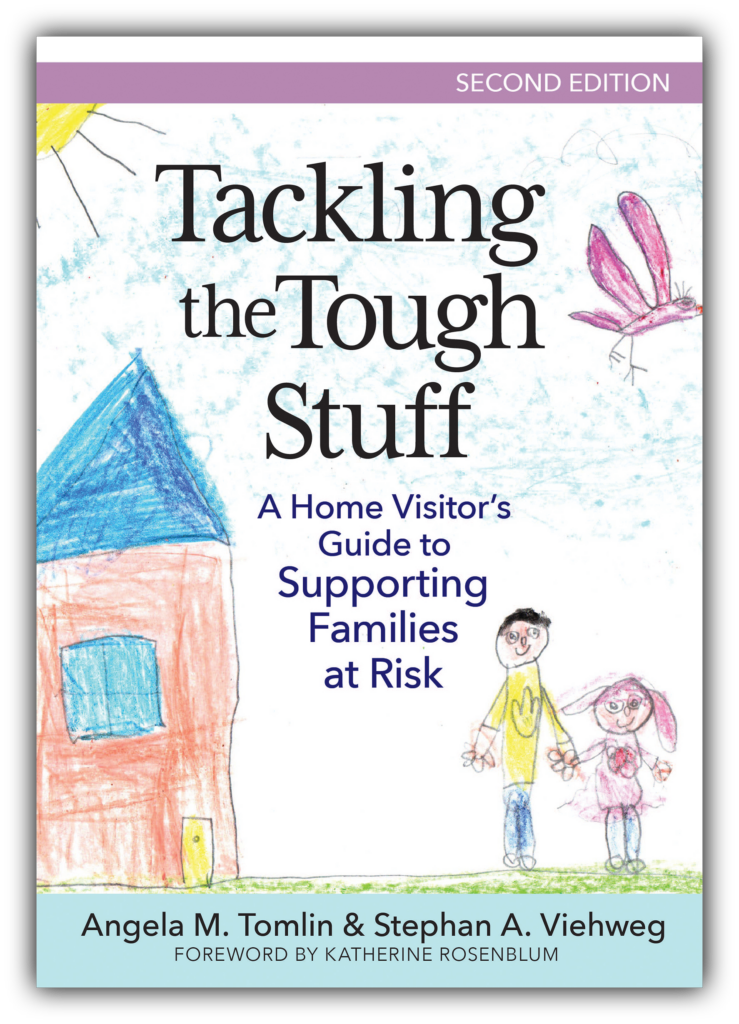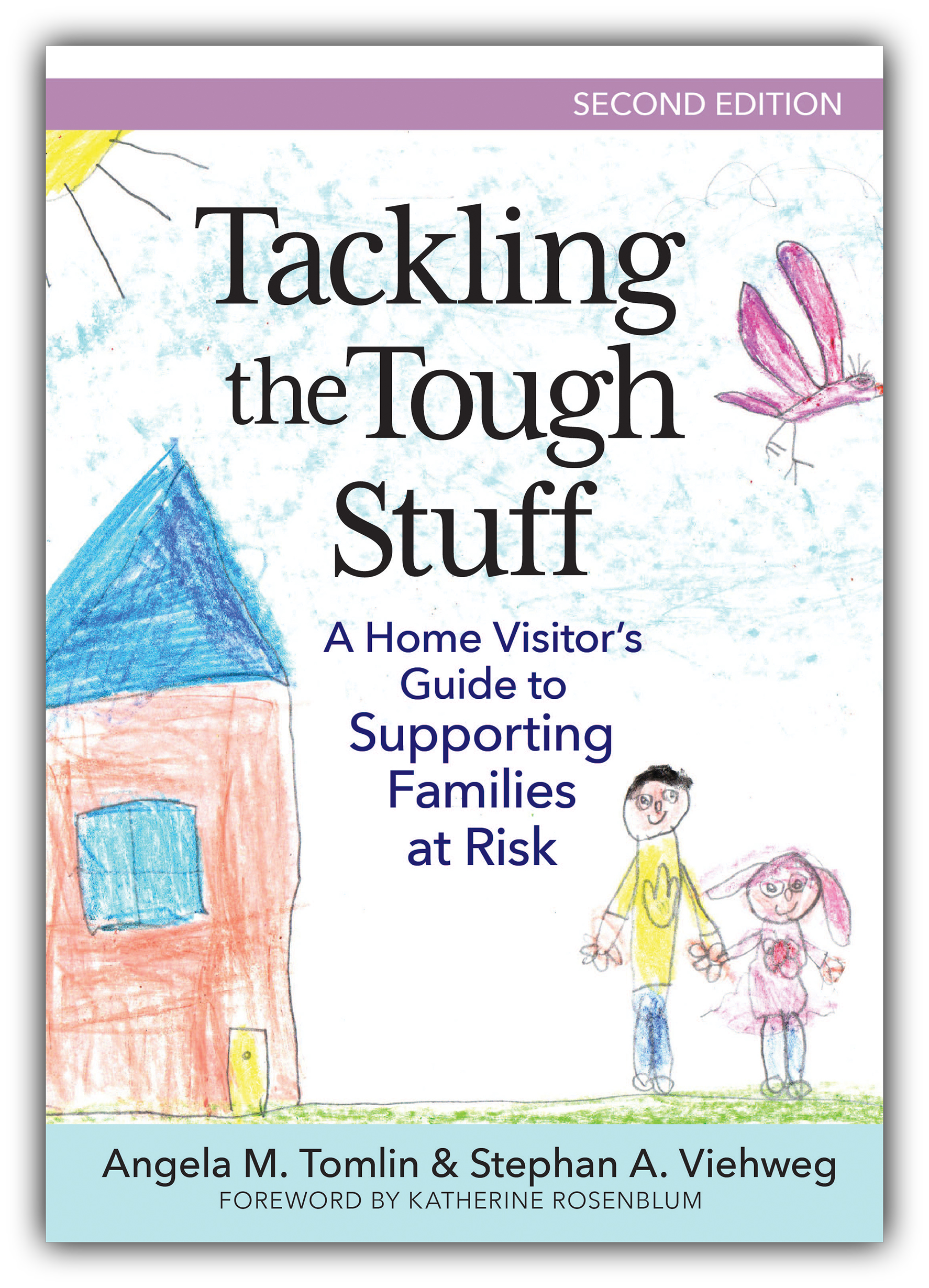Home Visiting 101: Improving Your Practice with the PAUSE Method
September 12, 2024
 In the new edition of the home visiting guide Tackling the Tough Stuff, authors Angela M. Tomlin and Stephan A. Viehweg present their highly effective PAUSE framework. An acronym that stands for Perceive, Ask, Understand, Strategize, and Evaluate, PAUSE is a blend of relationship-based practice, reflective skills, and recommended strategies for supporting at-risk families of children birth to 3.
In the new edition of the home visiting guide Tackling the Tough Stuff, authors Angela M. Tomlin and Stephan A. Viehweg present their highly effective PAUSE framework. An acronym that stands for Perceive, Ask, Understand, Strategize, and Evaluate, PAUSE is a blend of relationship-based practice, reflective skills, and recommended strategies for supporting at-risk families of children birth to 3.
Today’s post—adapted from the book—offers a quick introduction to the PAUSE process. Take a look at these five steps and see how PAUSE can help you organize your thinking about issues you encounter on the job, respond appropriately and effectively, and use reflection to assess the experience.
Perceive: Observe and Listen
The PAUSE process begins with learning more about the situation by observing, listening, and asking questions. As you slow down and learn more, you may see that things are not as they appear at first.
Observation is a great partner to listening. Eye contact, facial expressions, and body language may add a good deal of information about the emotional state of the speaker. Incongruence between body language and words should prompt the observer to wonder. Consider how you might respond to this mother if you listened only to her words rather than attending to both the words and how they were said:
Katarina held her newborn baby, Heidi, loosely across her lap. The home visitor expressed excitement about seeing the baby for the first time and asked how Katarina was enjoying being a mother. Katarina looked away and sighed. After a long moment, she said, “It’s pretty great, I guess.”
Observing and listening are not passive behaviors, and they are not as easy as they may seem. Giving full attention is a skill that takes practice and time to develop. (See Tackling the Tough Stuff for more guidance on skillful observing and listening.)
Ask Questions
In addition to careful listening and observation, ask questions to learn more about what’s happening. Different questions are useful at different times. It’s often productive to begin with open questions conveyed in a simple and supportive manner. Once you have the big picture or a general direction, you can ask caregivers more specific questions to clarify the situation.
It takes practice, but you can learn to respond and ask questions that open up a discussion instead of narrowing it too soon. Examples of these types of questions or statements include those that express interest or concern, encourage the responder to think about their own or another’s experiences, and include an offer to explore an issue together. For instance:
- Acknowledge how a person might be feeling and invite more discussion: “How is it for you when Jan has trouble sleeping?,” “I imagine that was difficult for you.”
- Confirm understanding and demonstrate your interest or concern: “I was a little confused about the therapy Clara is receiving. How often is that happening?,” “You mentioned that you have been concerned about Jon’s coughing. What things have been tried so far to help him?”
Avoid questions that can be answered with “yes” or “no,” such as “Are you giving Abdul enough sleep time?” These can be useful for gathering specific information, but they may feel judgmental and leave out the opportunity for expanded information.
Understand Each Participant’s Experience or Viewpoint
Relationships are a core underpinning of work with families. For relationships to function smoothly, each person’s experience or perspective should be considered. It’s important to recognize that the caregiver, the baby, and the home visitor may each view the situation in a different way. Encourage the caregiver to tell the story from their perspective, gently prompt attention to the baby’s experience, and share your own observations with care.
The skills reviewed earlier, including observing, listening, and asking helpful questions, can be applied to the quest to learn about the perspectives of all participants, including the babies. Spending this time gathering information will help you better understand not only the situation at hand, but also how that situation is being received or experienced by each participant. This information will help you make a decision about the best starting point for intervention.
Strategize: Select and Take Actions
As you observe, listen, and ask questions in dialogue with the caregiver, a variety of possible action steps will emerge. Together with the caregiver, choose some steps to try. As you and the caregiver negotiate the next steps, consider together what results would be satisfactory. (The PAUSE Worksheet included in Tackling the Tough Stuff will support you in this step—there’s a section that helps you work with the caregiver to identify possible responses or solutions, with criteria to evaluate progress and success.)
Evaluate Outcomes Using Reflective Processes
Because family life is often complex and sometimes stressful, it’s not unusual for workers who support families to feel the stress themselves. Reflecting on the choices made in your work provides a way for you to gain support, evaluate efforts, and engage in continuous learning and growth.
Being able to step back and reflect on the work is valuable, whether done on your own or, preferably, within a supervision or consulting relationship. Part of taking action is reflecting on that action in an evaluative way. (The Provider Reflection Worksheet included in Tackling the Tough Stuff gives you eight critical questions to consider as you reflect on your work.)
These five PAUSE steps can be used flexibly. Sometimes they may be implemented as a complete sequence or a cycle that repeats, and sometimes individual steps may be selected to support reflective practice based on identified needs and situations. To explore each of the PAUSE components in much more detail—and learn how to use the framework to benefit children and families—add the book behind today’s blog post to your program’s library!





Write a Comment
Your email address will not be published. Required fields are marked *
Post a Comment